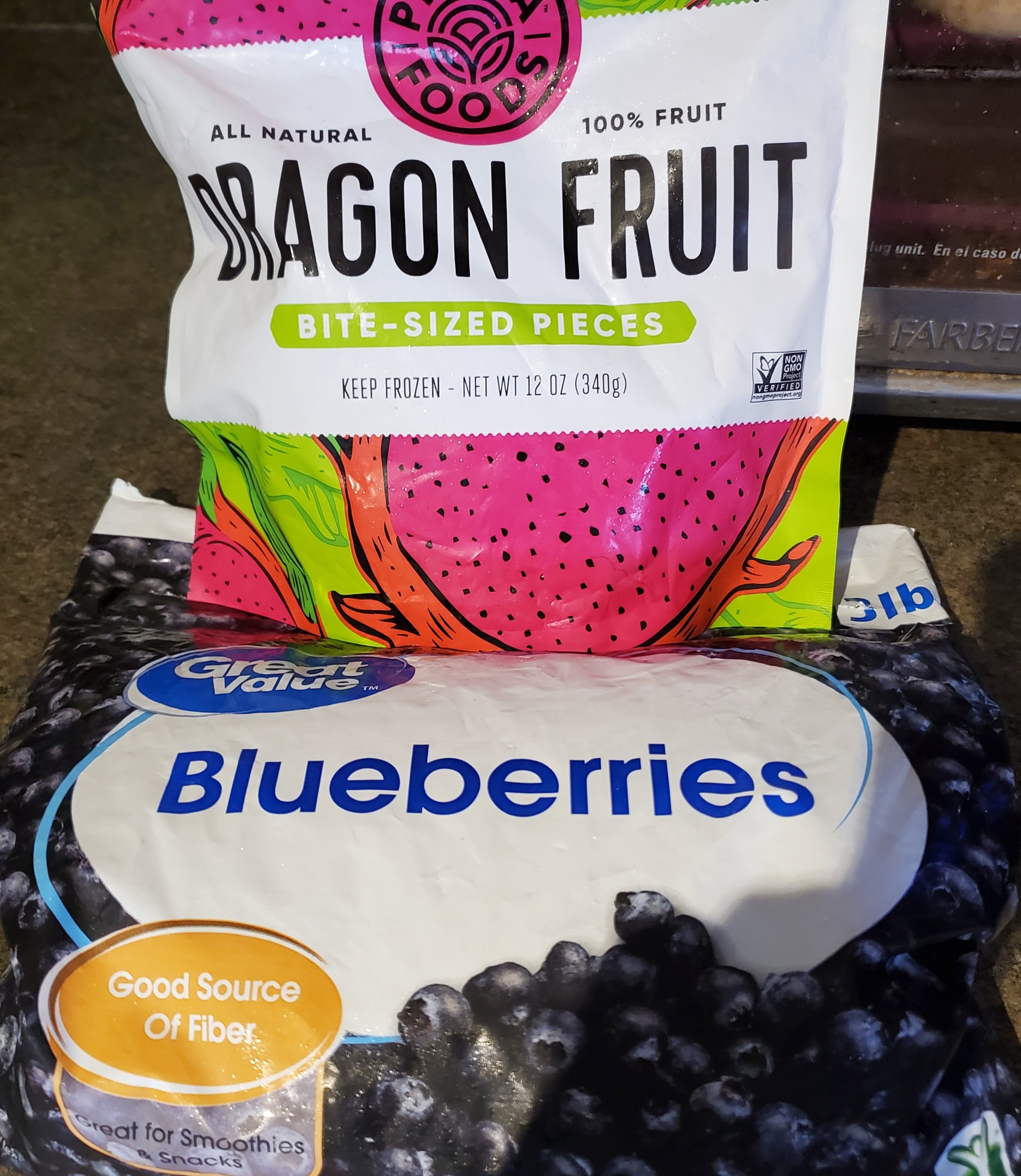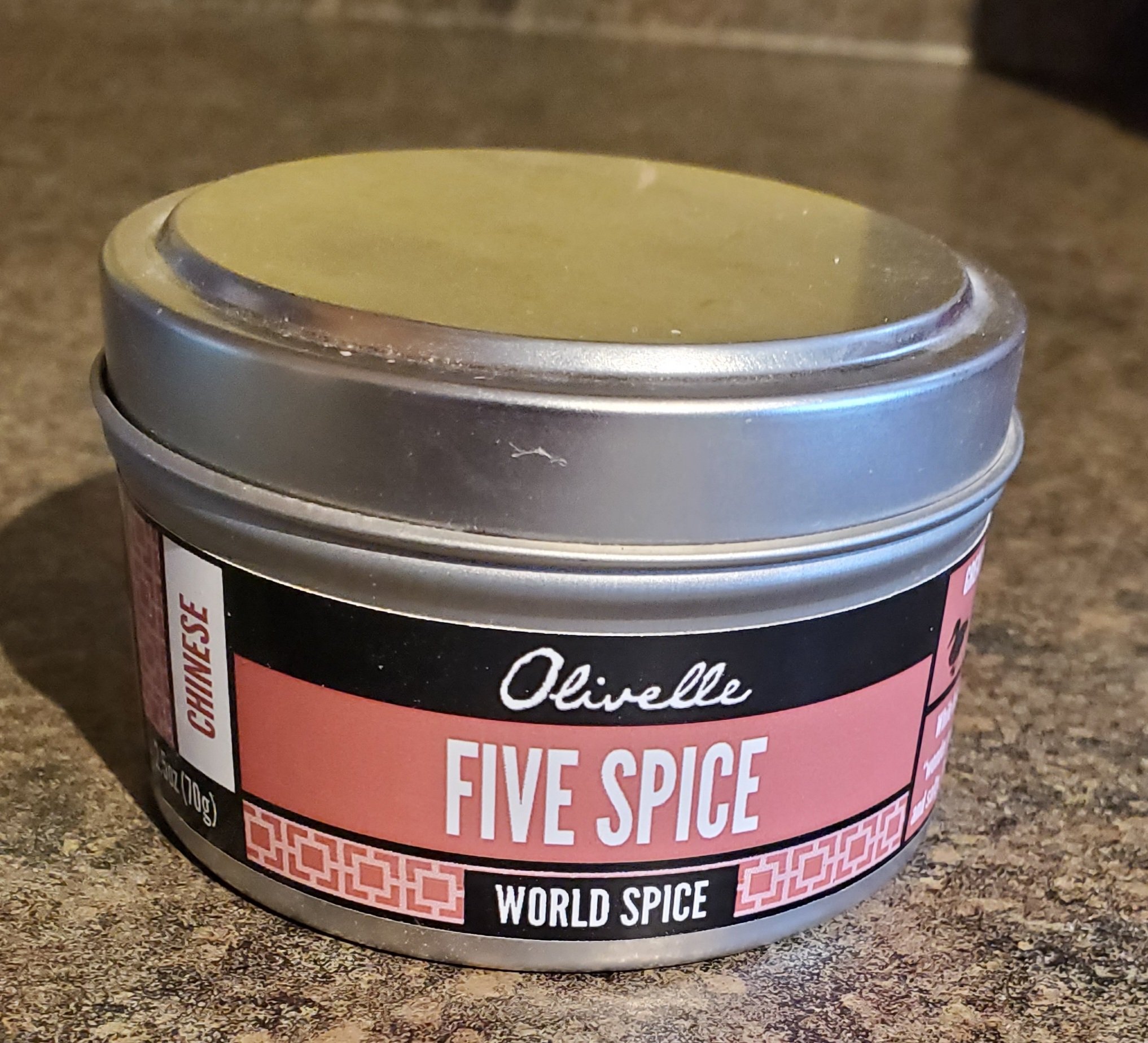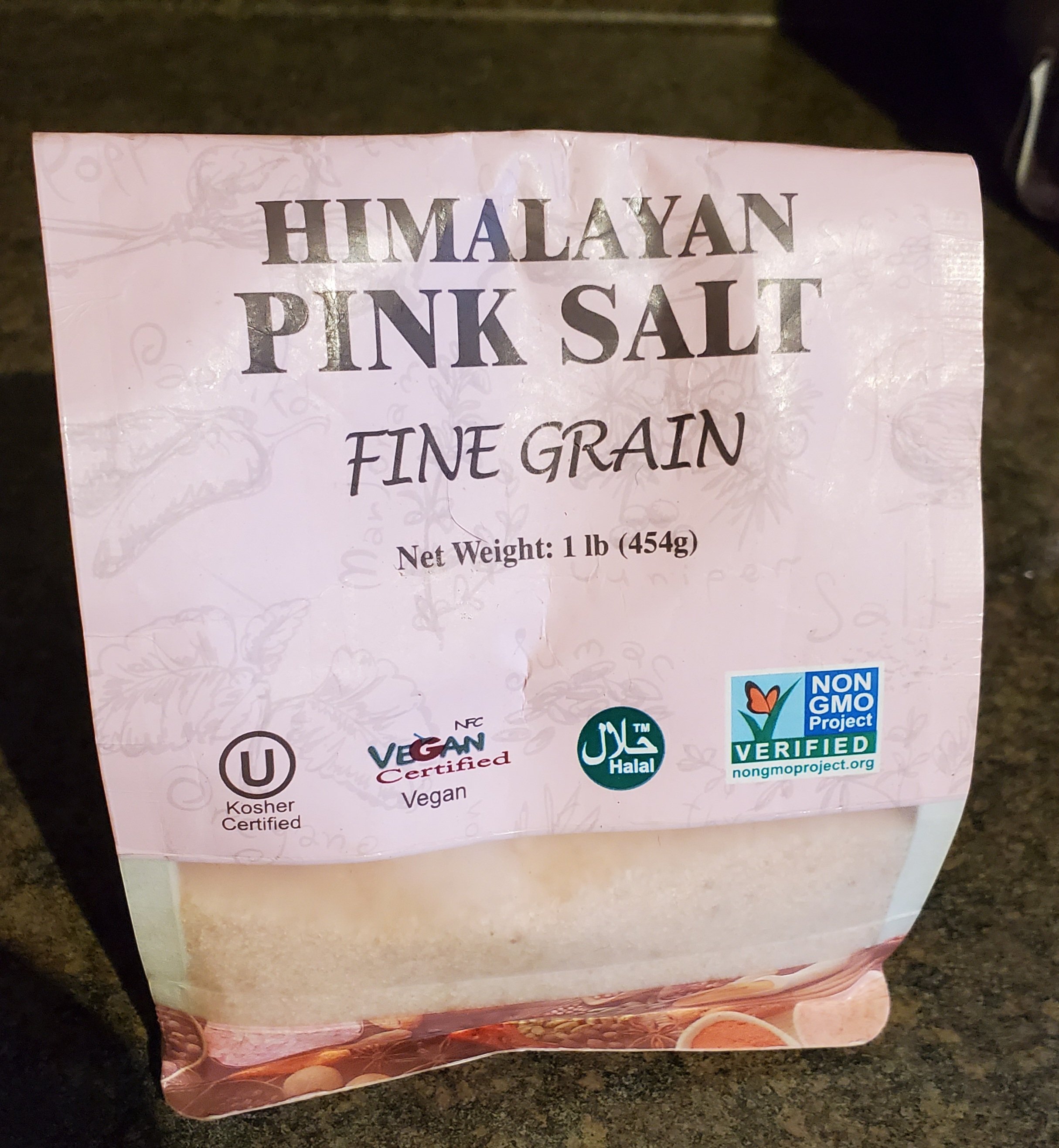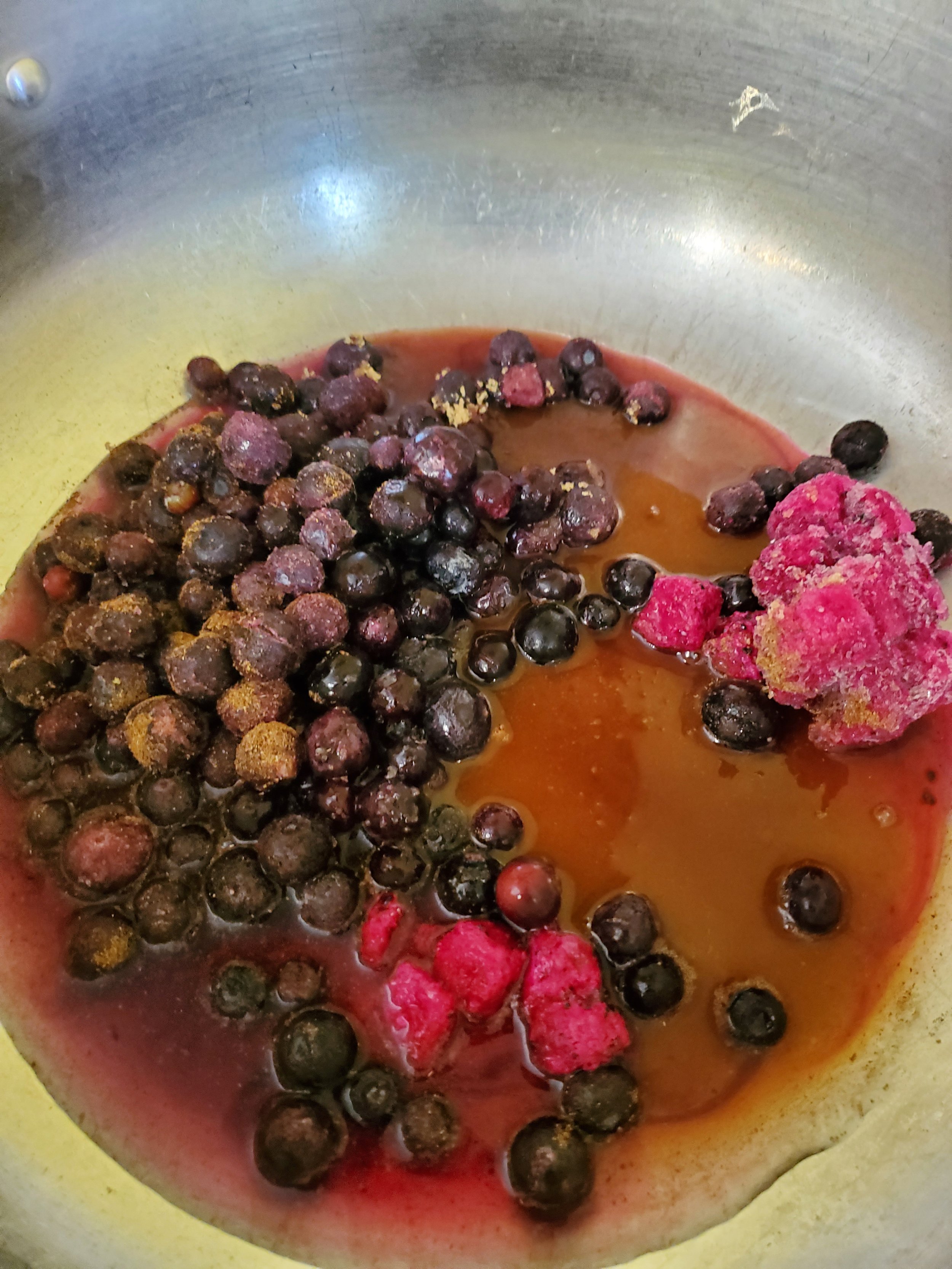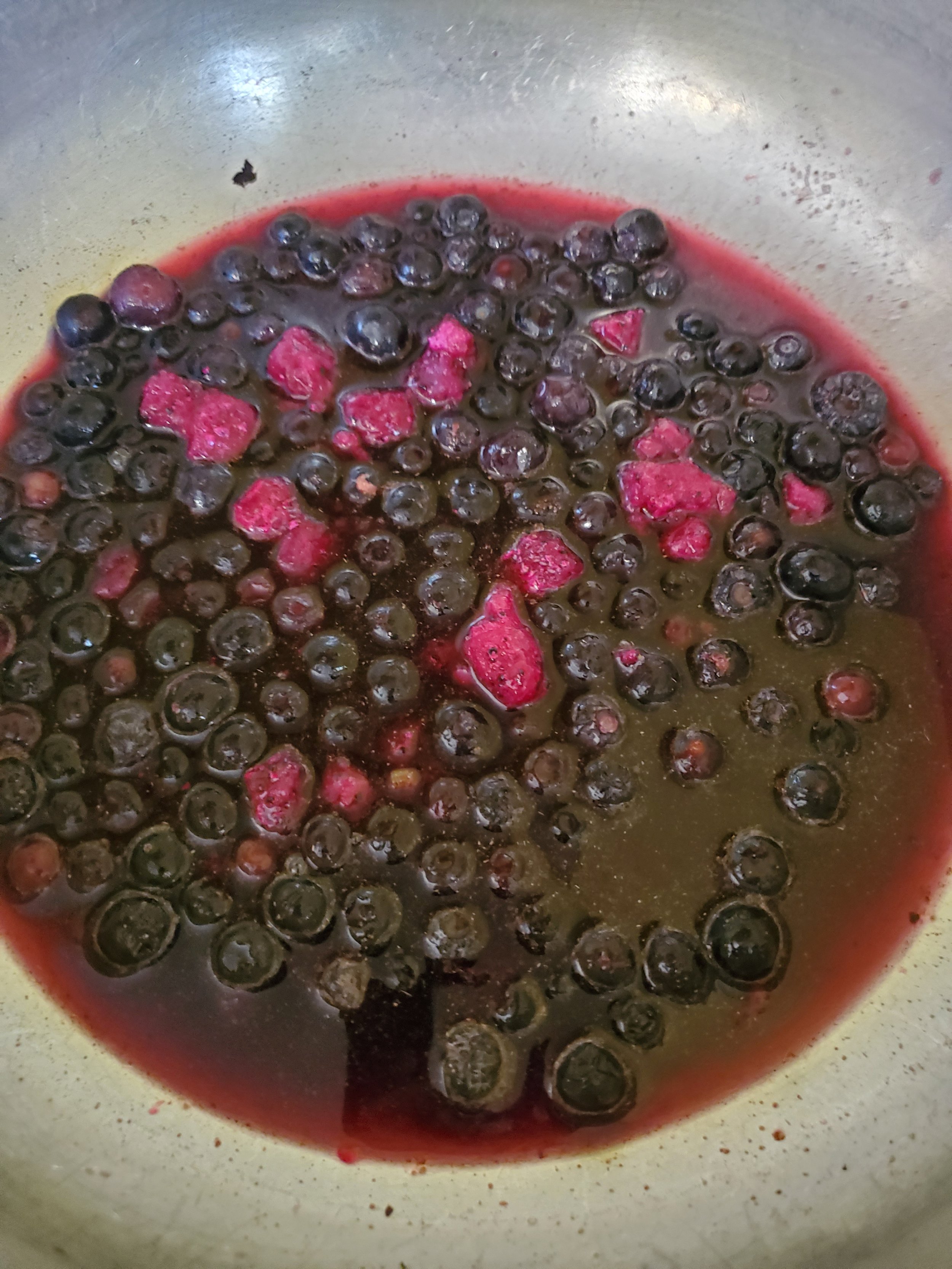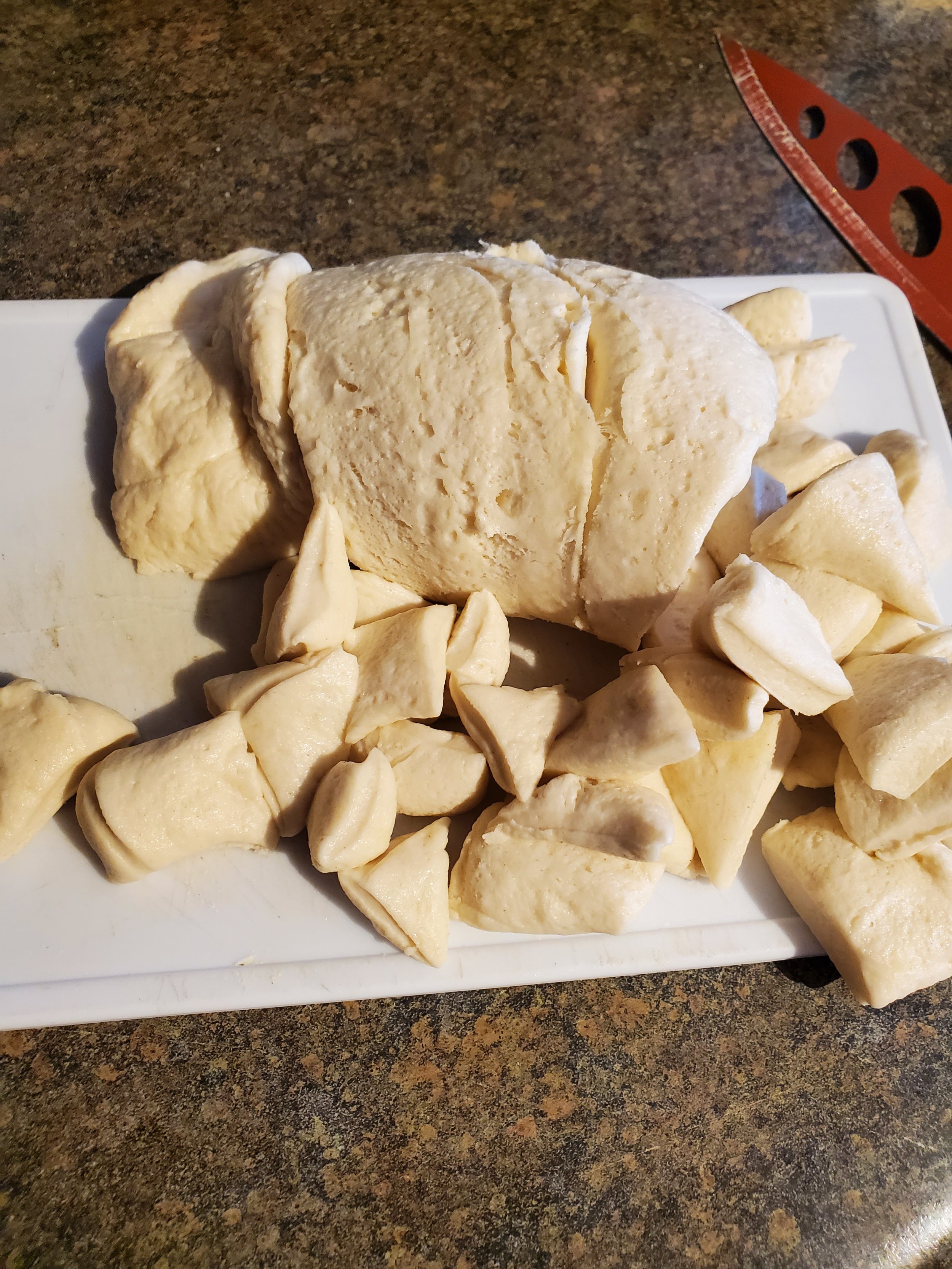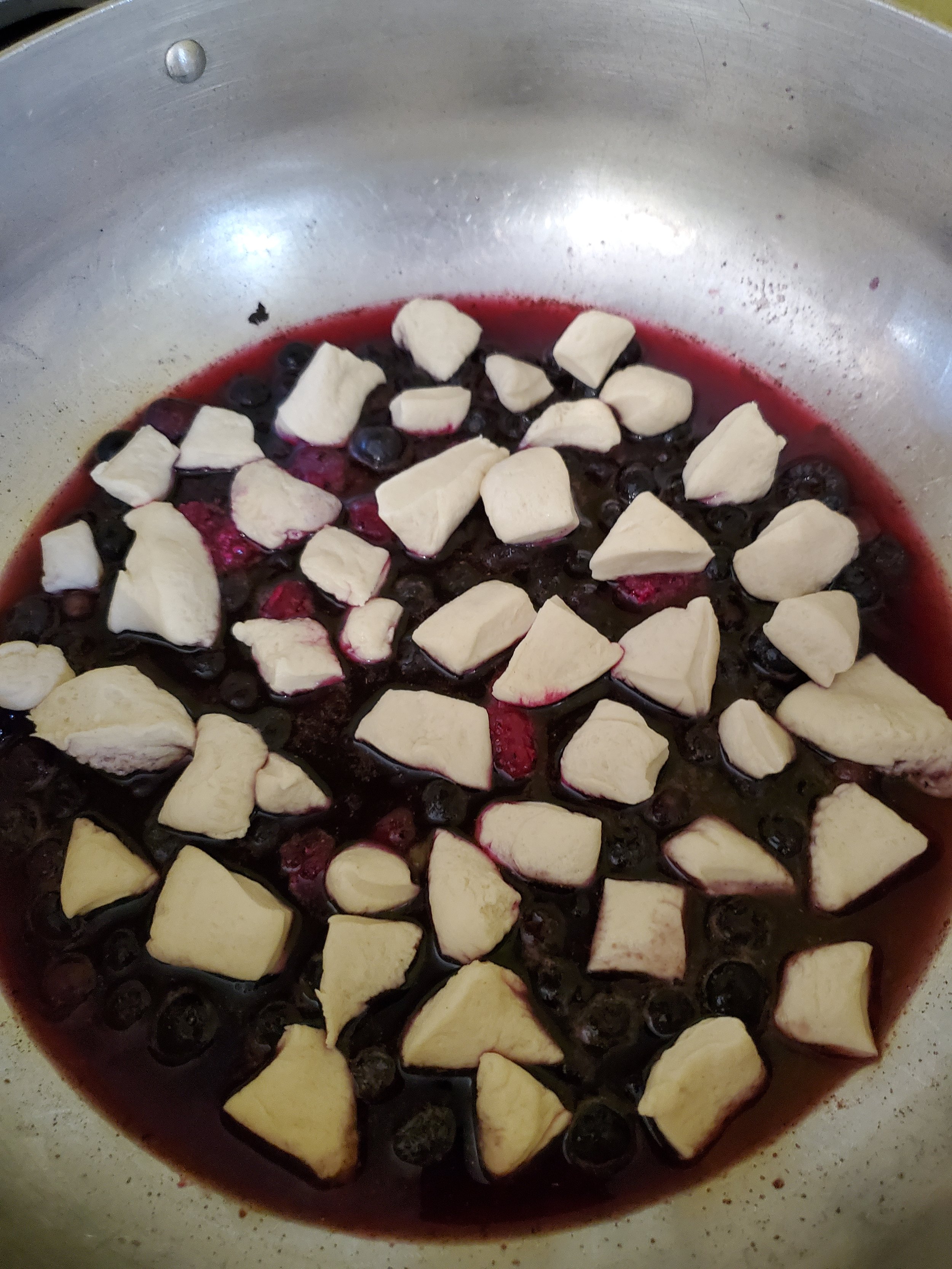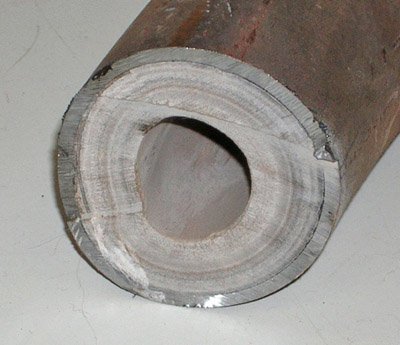A Frightfully Fruitful Crumble From The Crypt
As we move closer to the best holiday of the year (no objections! - they'll just fall on deaf ears), it's time to start looking at creepy party recipes to feed a crowd of little ghouls, gremlins, goblins, or what have you.
Every year we try to conjure up at least one new spooky recipe. This year's is a dessert - purple people eater pieces.
It's a little bit pie and a little bit dump cake, and it's also a whole lot of mess if not carefully contained. So do be cautious in serving this one to littles or the spill-prone.
Ingredients:
1 1/2 cups frozen blueberries
1/2 cup frozen dragon fruit
1/2 cup brown sugar
1/2 cup water
1 teaspoon lemon juice
1/4 teaspoon five spice
1 container refrigerated biscuit dough
Tools:
large covered pot or Dutch oven
bowl
spoon
measuring cups and spoons
knife
cutting board
Begin with your blueberries - just scoop them out into a bowl. Your measurement doesn't have to be exact. Just get somewhere in the ballpark of a cup and a half.
Add the dragon fruit pieces to the blueberries. We know dragon fruit is not something you find in the produce aisle on a regular basis, but even in the middle of nowhere we were able to pick some up frozen at a big box store. We've also had the opportunity to grab fresh dragon fruit at a local family grocery store. If you don't have the same luck, fear not! Any red- or pink-hued fruit can sub in. Strawberry, cherry, cranberry, pomegranate, guava... Just know the color may not be so vibrant. Dragon fruit is rather exceptionally in-your-face pink.
Measure in your brown sugar and your five spice. We know the five spice doesn't look like much, but just a little of this stuff makes an impact. You'll know it's there.
Dump the bowl into the dutch oven. Measure the water into the same bowl to take up as much of the sugar, spice and fruit juice as possible, and pour it over the fruit and spices in the pan.
Turn the heat on low and give everything in the pan a good stir. The sugar should dissolve right off the bat, but it will take a bit for everything to heat through.
While waiting for it to come up to a simmer, grab your biscuit dough and pop the container open. Split them apart and put them on the cutting board, and cut your biscuits into pieces. We start with roughly quarters, then trim down a little from there. In our experience, there's always one biscuit in the package that's about three times the size of the rest on one side and squished down paper thin on the opposite. That one gets cut into a great many awkwardly shaped chunks.
Give the contents of the pan one more good stir, then drop your funny-shaped biscuit pieces on top of the fruit mixture. From this point on, do not stir.
Once you have your biscuit dough on top of the fruit, increase the heat to medium-low. Cover the pan and allow it to simmer untouched for 15-20 minutes. Stay close to the pan - the smell is the best indicator of when it's done. If you can smell the fruit and spices getting fragrant without lifting the lid on the pan, it's close to done. If you have a clear glass lid that's not too fogged up, it should look syrupy between the pale biscuit pieces.
When you feel like it's ready, turn the heat off and lift the lid. Allow it to breathe and set for five minutes before serving.
Serve in heaping scoops, with or without a little ice cream.
As our spooky culinary adventure comes to a delicious conclusion, we hope you've enjoyed crafting and savoring "Purple People Eater Pieces" as much as we've relished sharing this unearthly treat with you. Let us know over on our Facebook page how it was received!
Halloween is a time for enchanting flavors and mysterious gatherings, but it can also be a season of unexpected surprises. If, amid the spectral celebrations, you find yourself in need of a visit from one of our trusted repair technicians at Appliance Rescue Service, don't hesitate to reach out at our website or by giving us a call ((214) 599-0055). Just as we've crafted this bewitching dessert to delight your taste buds, our skilled technicians are ready to ensure your appliances continue to perform their culinary magic, ensuring your celebrations remain seamless and your spooky feasts flawless. Wishing you a hauntingly good time this Halloween season!
Additional Reading:
Chocolate Pecan Cake for a Special Date

